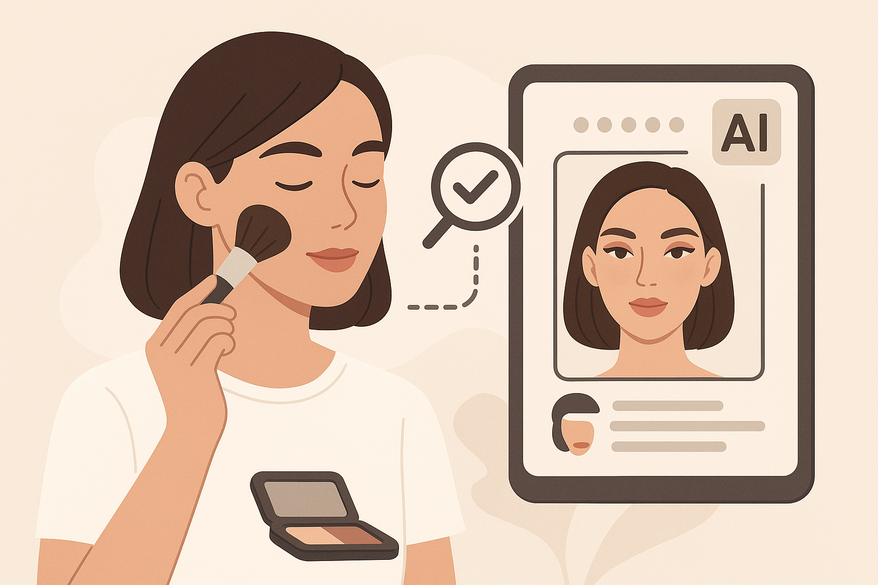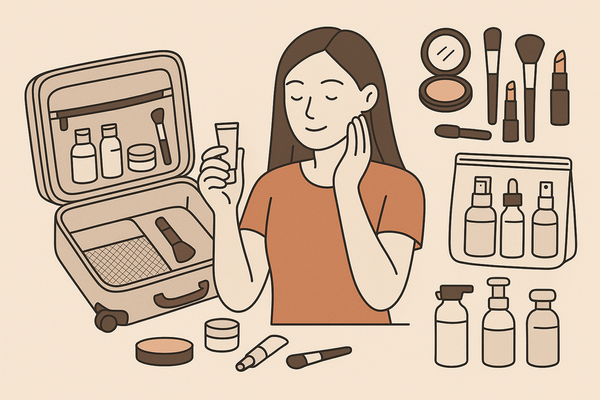Makeup Score Interpretation: A User Guide with AI Makeup Generator
Discover how makeup score interpretation enhances your routine, using an AI makeup generator for precise, personalized beauty assessments and improvements.

8 min read
Key Takeaways
- Makeup scores quantify technique, product compatibility, and skin harmony.
- AI makeup generator delivers personalized scoring and real-time feedback.
- Step-by-step interpretation helps prioritize strengths and weaknesses.
- Integrating AI tools accelerates skill improvement with data-driven insights.
- Practical tips and case studies illustrate measurable score gains.
Table of Contents
- Understanding Makeup Score Interpretation
- Step-by-Step Guide to Interpreting Your Makeup Score
- Integrating Technology: AI Makeup Generator
- Practical Tips and Techniques to Improve Your Makeup Score
- Case Studies or User Examples
- Conclusion
- Additional Resources
- FAQ
Understanding Makeup Score Interpretation
Makeup score interpretation starts by parsing how overall scores are calculated. These metrics blend objective assessments of technical skill, product performance, and skin harmony. Key factors include:
- Application technique – precision of blending, color transitions, and edge control.
- Product usage – quality of formulations and suitability for your skin type.
- Skin tone compatibility – harmony between makeup hues and natural complexion.
- Skin clarity and evenness – smooth texture and minimal blemishes.
- Artistic choices & trend alignment – creativity and adherence to modern styling cues.
Different evaluation systems include geometric facial analysis and ingredient-risk aggregation. A sample report might look like:
- Total score: 85/100
- Subscores: Technique 90, Skin Compatibility 80, Creativity 75
- Recommendation: “Improve blending around jawline; test warmer foundation undertones.”
Understanding these components outfits you to interpret your beauty rating and target specific areas for improvement.
Step-by-Step Guide to Interpreting Your Makeup Score
- Identify Report Sections
- Technique – blending precision and edge sharpness.
- Product Use – formulation quality and skin match.
- Skin Compatibility – undertone harmony and coverage evenness.
- Creativity – trend alignment and color innovation.
- Understand Metric Definitions
- High values indicate mastery: flawless gradients and ideal shade matches.
- Low values signal growth areas: uneven application or mismatched tones.
- Spot Strengths vs. Weaknesses
- Confirm what works by locating your highest subscore.
- Prioritize the lowest subscore for targeted improvements.
- Review Comments & Suggestions
- Watch for notes like “foundation uneven” or “shade mismatch.”
- Implement actionable tips: “blend with a damp sponge,” “warm up contour shade.”
- Prioritize Improvements
- Tackle your weakest category first for the fastest score boost.
- Plan incremental practice sessions or product swaps.
Mini–Example Interpretation: If your skin compatibility subscore is 65/100, consider switching to hydrating formulas or warmer undertones to instantly lift texture scores.
Integrating Technology: AI Makeup Generator
An AI makeup generator analyzes photos and preferences to score your look and recommend enhancements. The process unfolds in three stages:
- Input Stage – upload selfies or select style goals (e.g., “natural glow,” “bold lips”).
- Analysis Stage – AI compares your facial structure and makeup against a database of curated looks. Geometric and color-matching models produce subscores for technique, compatibility, and creativity.
- Output Stage – receive a personalized makeup score along with specific adjustments: shade swaps, technique tweaks, or product recommendations.
Watch a demo video:

Benefits:
- Real-time, data-driven feedback accelerates learning.
- Virtual try-on lets you experiment without purchasing.
- Personalized tutorials match your facial features and score-identified weaknesses.
By blending AI insights with makeup score interpretation, you gain a comprehensive roadmap for continuous improvement.
Practical Tips and Techniques to Improve Your Makeup Score
Technique Enhancements
- Blending – use a damp sponge in circular motions for seamless gradients.
- Contouring – follow your bone structure and soften edges to avoid harsh lines.
- Precision – employ fine-tipped brushes for eyeliner and lip definition.
Product Selection Guidelines
- Choose formulas tailored to your skin type: oil-free for oily, hydrating for dry. Source: Yuka Cosmetics Scoring
- Match undertones by testing on the jawline in natural light.
- Avoid high-risk ingredients flagged by ingredient-scoring apps to maintain skin health.
Routine Adjustments
Incorporate primer and setting spray to extend wear. Follow an optimized layering order: skincare → primer → color products → setting products.
Feedback Loops
Re-scan your look weekly in the AI makeup generator to monitor progress. Log score changes and note which technique or product swaps caused improvements.
Case Studies or User Examples
Case Study A: Technique-Focused Improvement
Profile: User A scored 60/100 overall; 55 in blending.
Action: Followed the AI’s buffer brush tutorial.
Result: Technique subscore rose to 85; overall score improved to 80.
Observation: Consistent practice smoothed foundation gradients.
Case Study B: Product Compatibility Enhancement
Profile: User B scored 50 in skin compatibility due to harsh ingredients.
Action: Switched to gentler formulas rich in ceramides and hyaluronic acid. Source: Yuka Cosmetics Scoring
Result: Skin compatibility subscore increased to 80; texture issues reduced.
Observation: Healthier skin improved makeup adherence and finish.
Conclusion
Makeup score interpretation clarifies the path to enhancing your artistry by dissecting complex evaluations into actionable insights. Integrating an AI makeup generator brings precision, instant feedback, and virtual try-ons to your routine. Use this guide’s step-by-step process, practical tips, and case studies to craft a personalized improvement plan. Analyze your report, apply AI recommendations, and track your progress—your beauty journey awaits!
Additional Resources
- Rate My Makeup Online Guide
- Understanding Makeup Score Methodologies
- Ingredient Safety & Evaluation Guide: Yuka Cosmetics Scoring
- Upcoming Post: Advanced Contour Techniques for Higher Makeup Scores
Stay tuned and keep scoring higher!
FAQ
- What is a makeup score?
A quantitative measure evaluating technique, product performance, and skin harmony in your makeup application. - How does an AI makeup generator work?
It uses machine learning to analyze photos, score your look, and recommend personalized enhancements. - Which factors most impact my score?
Key drivers include blending precision, product compatibility, skin tone match, and creative choices. - How often should I reassess my score?
Weekly check-ins allow you to track improvements and adjust techniques or products accordingly. - Can I improve my score without AI?
Yes, by following targeted practice, product swaps, and self-assessment guidelines outlined in this guide.




